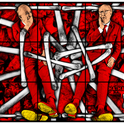Chip War. What is a good for? Quite a lot, actually—certainly in the middle of the 20th century, when the war began as a competition between different US startups, with names such as Shockley and Fairchild, to produce smaller and more capable semiconducting chips.
It was this furious innovation that created much of the world as we know it today. Those chips went into computers and calculators and cars and smartphones. They are essential to how we work, play, communicate—and, yes, to how we prosecute war.
Chris Miller’s Chip War tells this story from the beginning, up to today. It is one of the most enjoyable and eye-opening tech books of recent years, though to call it a “tech book” is to impose overly tight borders around its achievements. There’s much here for all sorts of readers.
Interested in geopolitics or economics? Then you need to know about chips. In Miller’s account, the competition of the early days has turned into more of a cold war, as other countries have looked to expand their influence. A number of chapters—complete with spies and FBI sting operations—are devoted to Japanese companies’ efforts to overtake their US counterparts in the 1980s.
Even fans of soap opera might find something here. Unusually for such a book, Miller doesn’t just focus on the geniuses in white lab coats but also the blue-collared pioneers who made the production processes possible—and there really are some characters among them.
The final chapters are effectively about whether the Chip War could turn hot. The most advanced facility in the world is in Taiwan, and China, we know, has designs in that direction. Whoever controls the semiconductors controls the future.














